#learning japanese
Text
Today, my nihongo no sensei asked me which was my "fave character" from Bleach. So, of course, I had to mention Byakuya. The thing is, that I've been learning kanji for some weeks now and even if I'm not expected to learn more than what she is giving us for N5 level, I really enjoy learning as many as I can. That includes N4 and N3 level ones (they aren't that hard, believe me). Therefore, I was able to write down Byakuya's name fully in Kanji: " 朽木白哉 ".
Now, because I'm a sucker for hidden meanings, we already know his name has a special (as Hisana does) one. The "Kuchi / 朽木" stands for "decay" and Ki/木 means "tree". As for his name, Byakuya/ 白哉 the combination forms "midnight sun" or "white light in the dark" or even "white night" (pretty abstract, but still beautiful and precise for his Hakuteiken technique/白帝剣).
Now, the little coincidence (it might be just a coincidence, believe me I'm just a beginner) I found is in the last kanji of his name : 哉. It is also used with the combination: 善哉 which both mean "well done" (pretty interesting if you think about Byakuya's obsession for perfection too) but also "Zenzai". Zenzai is a soup, that varies with every region. But in general is made of Azuki beans. And do you remember who wanted to cook Shiratama Zenzai for Byakuya in the "Honey Dish Rhapsody" novel? Yes, his beloved sister Rukia! 🥺💖


If it's just a coincidence I don't care, is still cute :P (But we all know how much Kubo likes to play with this hidden little easter eggs)
#sashi's nihongo experiences#bleach byakuya#kuchiki byakuya#byakuya kuchiki#rukia kuchiki#nihongo#bleach#learning japanese#remember I'm studying to N5
23 notes
·
View notes
Text
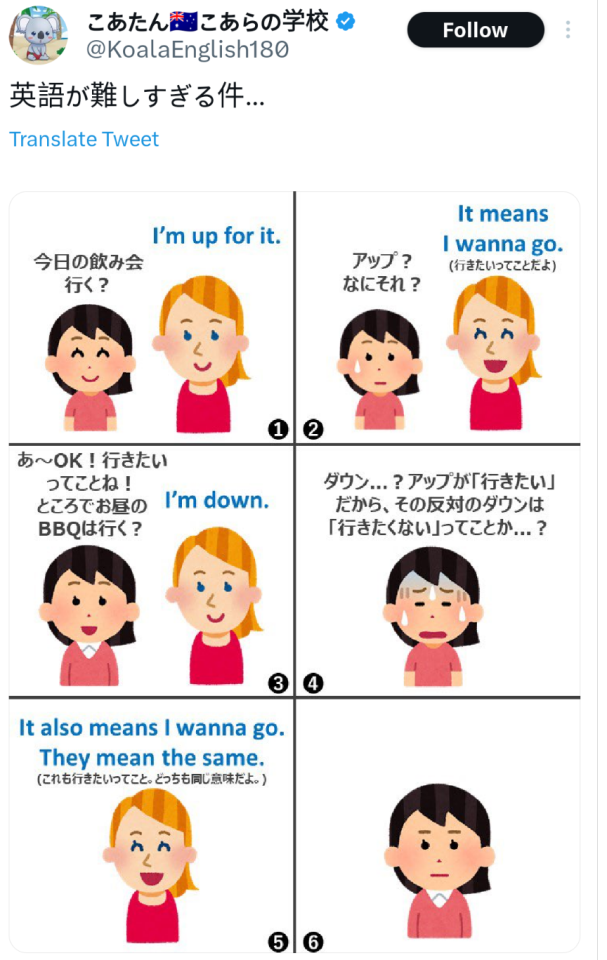
#japanese#learning japanese#japanese vocab#langblog#japan#anime#tumblr language#langblr#manga#japanese vocabulary
20K notes
·
View notes
Text

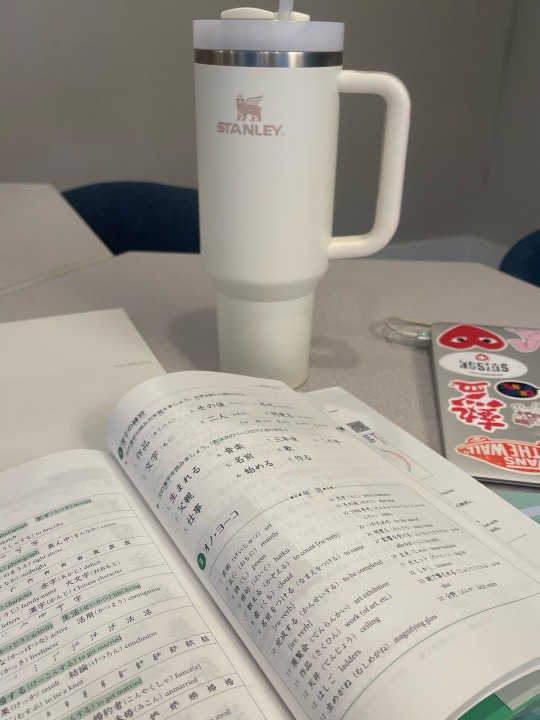
sunday studies 🕊️🍵📗
#studyblr#study blog#langblr#langblog#japanese langblr#japanese language#japanese#studyinspo#study motivation#study aesthetic#study desk#exam study#student blog#learning japanese#language blog#language learning#student life#studying
552 notes
·
View notes
Text
Fake-tanuki soup or Fake tanuki-soup?
連濁(れんだく; en: rendaku)is a phonological rule in japanese that makes the first voiceless consonant of a word change into a voiced consonant when used in a compound word. For example, おり + かみ → おりがみ (ori + kami → origami) ("fold" + "paper" → "paperfolding") - the /k/ sound in かみ becomes a /g/ sound (which is the voiced version of a /k/ sound) by adding a voicing mark -> が.
What’s interesting about 連濁 is that native speakers can use it subconsciously as a sort of “order of operations” system for unfamiliar words, like PEMDAS or BIDMAS in maths. A classic example of this is the にせたぬきじる problem[1]. Native speakers can immediately and with confidence tell the difference in meaning between two compound words they have never heard before, despite the only difference being the voicing of a single consonant. Take the three words 偽 (にせ, meaning “fake” or “imitation”), たぬき (tanuki, the Japanese racoon dog), and 汁 (しる, meaning “soup” or “broth”). They can be combined into the following compound words: にせたぬきじる and にせだぬきじる (note the voicing mark, or dakuten, on the latter). Keep in mind, these two words do not exist in ordinary japanese - they’ve been created as part of a linguistics experiment.
You might think the meaning would be ambiguous in those compound words: is it (imitation tanuki)+soup or imitation+(tanuki soup)? Let’s imagine we’re referring to the former. First, we combine にせ+たぬき. There’s a rule that rendaku can’t occur if there’s already a voicing mark in the second component of the compound, but we’re safe here - たぬき has no voicing mark. Therefore, it becomes にせだぬき. Then, we combine にせだぬき+しる. Again, しる has no voicing mark in it, so we’re safe to add it in, and we get にせだぬきじる.
Conversely, let’s say we were referring to fake “tanuki-soup”. First we combine たぬき+しる. This combines safely to たぬきじる. Then we combine にせ+たぬきじる. But wait, the second component does already have a voicing mark, on じ! So we can’t add one to た. Therefore we end up with にせたぬきじる.
That’s a lot of thinking and linguistic hoops to jump through to make up 2 words, but here’s the thing: Japanese native speakers who have never heard these words before can instinctively deduce the difference in meaning with startling accuracy. They correctly determine the meaning of にせだぬきじる as “a broth made from imitation tanuki” and にせたぬきじる as “a fake version of a dish called ‘tanuki soup’”. Even more surprising is the research findings of Shigeto Kawahara, which show that children as young as 9 years old can consistently deduce the difference as well[2]. I think this shows how incredibly powerful the subconscious mind is at learning linguistic rules, and how bad the conscious mind is at learning them!
#langblr#japanese#japanese language#language acquisition#language learning#language#linguistics#learning japanese#日本語#jimmy blogthong
678 notes
·
View notes
Text
接続詞(せつぞくし)
conjunctions - words that are used to link phrases together
情報を加える // Adding information:
しかも besides
そのうえ moreover, on top of that
さらに moreover, on top of that
そればかりか not only that, but also...
そればかりでなく not only that, but also...
情報を対比する // Putting into contrast:
それに対して in contrast
一方 whereas
他の可能性・選択肢を言う // Giving alternatives:
あるいは or perhaps (presenting another possibility)
それとも or (presenting another option within a question)
結論を出す// Drawing a conclusion:
そのため for that reason
したがって therefore
そこで for that reason (I went ahead and did...)
すると thereupon (having done that triggered sth. to happen)
このように with this (adjusting a conclusion to the arguments given beforehand)
こうして in this way
理由を言う // Giving a reason:
なぜなら...からだ the reason is
というのは...からだ the reason is
逆説を表現する // Expressing a contradiction:
だが however, yet, nevertheless (contradicting what one would have expected)
ところが even so (spilling a surprising truth)
それなのに despite this, still
それでも but still (despite a certain fact, nothing changes)
説明を補う // Amending one's explanation:
つまり that is, in other words (saying the same thing using different words)
いわば so to speak (making a comparison)
要するに to sum up, in short
説明を修正する // Revising one's explanation:
ただし however (adding an exception to the information stated beforehand)
ただ only, however
もっとも however (obviating any expectations that might arise through the previous statement)
なお in addition, note that (adding supplementary information)
話題を変える // Changing the subject:
さて well, now, then (common in business letters after the introductory sentence; is often ignored in tranlations)
ところで by the way
#文法#grammar#conjunctions#japanese grammar#jlpt n2#japanese langblr#japanese language#language#japan#japanese#japanese vocabulary#langblr#linguistics#studyblr#study blog#studyspo#study motivation#study aesthetic#study notes#learning japanese#nihongo#日本語#日本語の勉強#light academia#light acadamia aesthetic
666 notes
·
View notes
Text
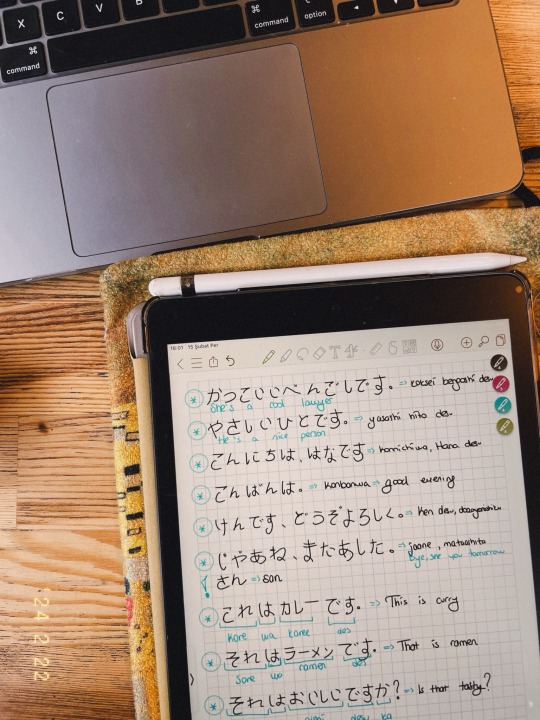



learning japanese update: i’ve been practicing writing down sentences and trying to understand the sentence structure. linguistically, japanese and turkish have similarities, so i can say that it’s been going well and i’m having sooo much fun!!
#langblr#lunlunstudies#learning japanese#japanese learning#language lessons#second language#japanese language#language learning#language#langblog#studying#studyblr#studyspo#studystudystudy#study motivation
407 notes
·
View notes
Text
Japanese Reading Resources for Absolute Beginners
A question I encounter often is "How much Japanese should I study before I can begin reading in Japanese?"
From my experience as a learner and reader myself and from managing a Japanese book club for other learners I can honestly say that you can start way earlier than you probably think!
There are many resources that only require knowing hiragana. Those texts usually teach vocabulary through pictures and only use basic grammar.
Some are even simpler than that: The Japan Foundation's Hiragana Books are great for those, who are still remembering hiragana characters. Every short book introduces only 1-2 new characters, so it's a great reading exercise for those who've just started.

The free graded reader 「どうぞ、どうも」 by the NPO Tagengo Tadoku only uses the words 「どうぞ」 and 「どうも」 to write an entire story. Again, this makes for a great exercise in reading hiragana and understanding context. Another "level 0" recommendation by the same NPO would definitely be 「しろい?くろい?」. This book uses the full range of hiragana characters but the grammar is simple and all used vocabulary is illustrated.
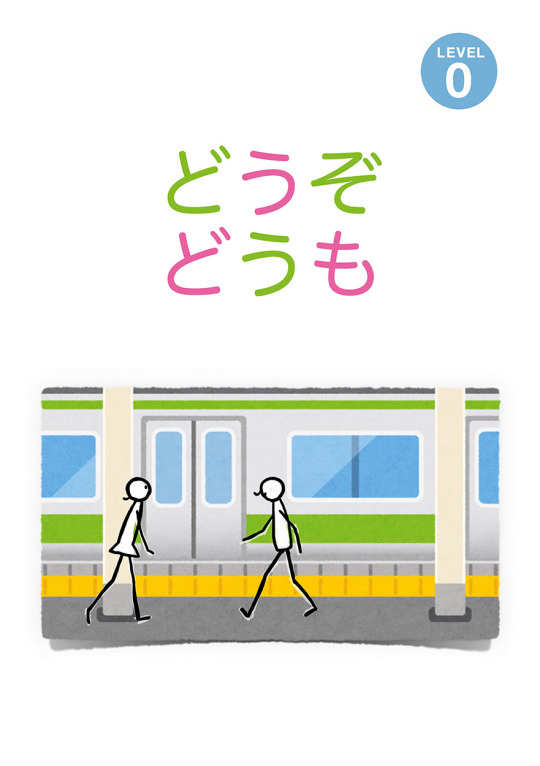
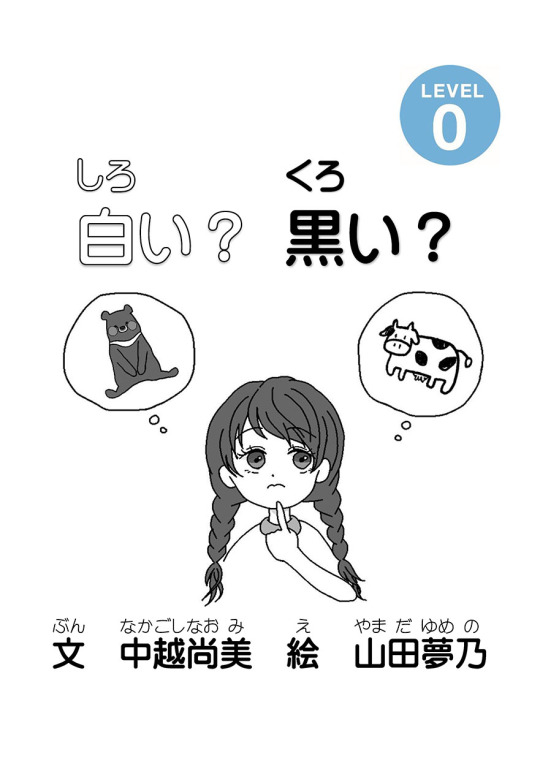
Another site with great resources for absolute beginners is Nihongo Tadoku Dōjō. If you have memorized both hiragana and katakana and know how the particles を and で work you will be able to read this text about stationary (ぶんぼうぐ) and understand everything by looking at the pictures!

The resources linked so far can all be accessed completely free on the linked websites. If you have the money to spare, please also have a look at the box 「スタート」 from the series reberubetsu nihongo tadoku raiburarī published by the NPO Tagengo Tadoku and ASK (affiliate link). This box includes 8 little books in very simple Japanese.
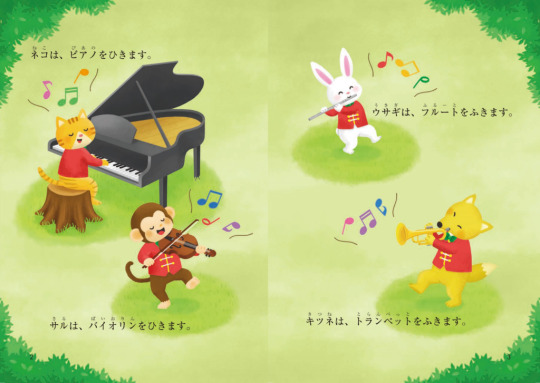
All these texts for absolute beginners will get you started reading in Japanese with very little knowledge of characters and vocabulary.
Reading in Japanese is a skill that requires practice. But once you get used to it, it can be such a valuable tool to reinforce new vocabulary and grammar. So please don't wait until you're "ready" before you start reading - start early at your own level!
#my book reviews#reading in japanese#study japanese#learning japanese#日本語#japanese books#やさしい日本語#free graded readers#free tadoku graded readers#nihongo tadoku dōjō#absolute beginner level#japanese langblr#japanese language#japanese reading comprehension#japanese free reading resources#japanese reading resources
646 notes
·
View notes
Text
IRL Japanese 2: Things the kids I teach say all the time
If you're planning to work as an ESL teacher in Japan working with kids, this vocab is gonna be super useful for you! You'll pick up a lot as you go along, but it's good to have an overview from the start.
できた = done, finished (whenever they finish an exercise I've set them. The older kids will use the ます-form, but kids under like age 8 will use this one)
かえる?= is it time to go home? (lit: go home?)
わかった = got it (again, the older kids will use the ます-form)
わからない / わかんない = I don't get it (idk if わかんない is just dialect or if it's common overall, but I hear it more than わからない. Usually from the kids who don't wanna be there and are making zero effort)
ちがう = wrong / different (when they give an answer but realise it's not correct. It's basically like "wait, no")
ばか = idiot (sometimes boys say this to their friends)
全部?(ぜんぶ)= everything?! (asked in disbelief when I ask them to write more than one word)
やめろ = stop it! (used with friends when they're teasing each other)
いたいよ = that actually hurts, you know! (used with friends when they're rough-housing)
よし (more like 'yoshhh') = right then (filler word indicating the start of an activity or a change of activity)
水筒(すいとう)= water bottle (most kids bring one to class and frequently forget to take them with them when they go home)
忘れた(わすれた)= I forgot (usually in reference to the text book they left at home)
トイレに行きたい = I want to go to the bathroom
先生、大好き!(せんせい、だいすき!)= I love you, Sensei!
Other useful classroom/school vocabulary:
サイコロ = dice
トランプ = playing cards
ごろごろ = onomatopeia for the sound for rolling (I found the kids got confused if I just mimed rolling a dice/ball and said "roll!" but if I did the gesture and said "gorogoro", they understood)
ビリビリ = onomatopeia for ripping (useful for when you have tear-apart crafts in class)
ケシケシ = onomatopeia for erasing something (useful when you try to explain to a kid they spelled something wrong. Because it's easier to just say "A kesh-kesh, E" than "Not A, E. Okay great you wrote E, but A needs to go. No no no not the whole word, just A. Oh my God. Okay. Let me write it and you copy.")
ちょっと = a little, soon, wait a little (useful if the kids are getting a bit antsy and ready to go home a bit too early/don't want to wait their turn. Don't use it with parents though!)
がんばれ = do your best / you can do it!
あぶない!= dangerous / look out! (useful if a kid unexpectedly runs in front of me while I'm carrying a table)
せえの!= Altogether now! (When I need the kids to repeat something after me)
だめだよ = Don't do that (for when the kids repeatedly do something I've asked them not to do)
少々お待ちください(しょうしょう おまち ください)= polite form of "please wait a moment". Useful if you have a parent talking to you and you need to go get something (e.g. a communication sheet for them to point at so you know what they're trying to say)
授業参観 (じゅぎょうさんかん) = parent observation (PO). A couple of times a year, parents are invited into the classroom to watch the lesson (absolutely not a thing in the UK, not sure about other countries). The past two months I've had POs at my various schools, and so the parents come to the door and ask me if it's PO week. I don't understand most of the question, but I can pick out this one word and a question particle and figure out what they're asking.
It's also obviously a good idea to learn vocabulary related to stationery (eraser, pencil, crayon, pen, notebook, textbook, pencil case etc) because kids forget/lose their stuff all the time and will inevitably ask you if they can borrow something.
504 notes
·
View notes
Text
いろどり · irodori - Japanese for life in Japan
(。•̀ᴗ-)✧ resources

IRODORI is a useful website made by The Japan Foundation. It is a series of 3 textbooks, with audios and materials completely free, focusing on developing skills useful for life in Japan.
Whether you are planning to come to Japan in the future and want to learn what you should be able to do before you arrive, or whether you are already living in Japan and wish to check your Japanese ability and increase the number of things you can do, we sincerely hope that this textbook will help you achieve your goals. - "what is irodori" website page.
The textbooks are super organized, divided in: starter (A1), elementary 1 and elementary 2. Finishing elementary 2 means having an A2 level [At A2 level, you can hold short, basic everyday conversations on familiar topics.]
I recommend styling your learning method with the goal you have in mind. You can understand more about it reading the post I made.
Hope it was helpful! Let me know and let's share resources~
またね~@inkichan
꒰ა ˚₊ ✧・┈・╴﹕꒰ ᐢ。- ༝ -。ᐢ ꒱﹕╴・┈・𐑺 ‧₊˚໒꒱
#japanese#nihongo#studyblr#japanese langblr#langblog#japanese studyblr#日本語#resources#japanese resources#free resources#japanese free resources#textbook#free#free textbooks#pdf#japanese pdf#learn japanese#learning japanese
567 notes
·
View notes
Text
Basic quantifiers in Japanese
台 (だい) - used for cars, bicycles, machines, mechanical devices, household appliances
杯 (はい) - used for cups and glasses
匹 (ひき) - used for small animals
本 (ほん) - used for long and thin objects
階 (かい) - used for floors
回 (かい) - used for occurrences, numer of times
個 (こ) - used for things that are small and round
枚 (まい) - used for thin and flat objects
人 (にん) - used for people (but we say 一人 (ひとり) for one person and 二人(ふたり)for two
冊 (さつ) - used for books
歳 (さい) - used for age
Plus general quantifiers:
一つ (ひとつ)
二つ (ふたつ)
三つ (みっつ)
四つ (よっつ)
五つ (いつつ)
六つ (むっつ)
七つ (ななつ)
八つ (やっつ)
九つ (ここのつ)
十 (とお)
#japanese#langblr#japanese langblr#vocabulary#japanese language#studyblr#japanese vocabulary#food vocabulary#vocabulary list#learning japanese#mine
779 notes
·
View notes
Text
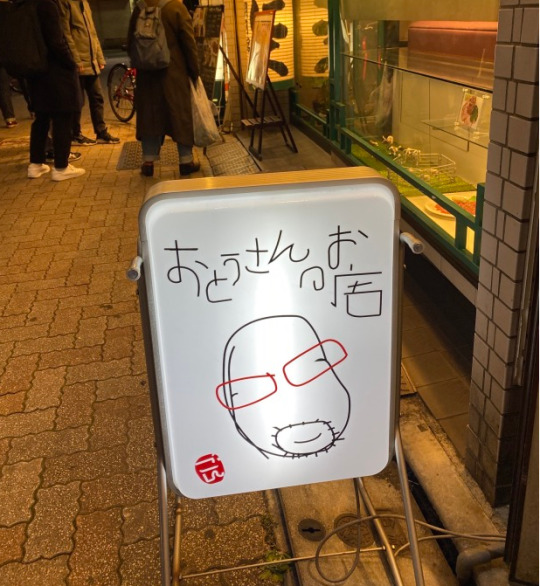
Adorable kid handwriting at a restaurant in Nishiogi. It says おとうさんのお店 Otōsan No Omise (Daddy's Shop), and it includes a sweetly funny minimalist portrait, drawn by a little kid, of a man with a lumpy head, tiny eyes, glasses, a scratchy beard, and possibly no hair.
The word おとうさん is usually written お父さん (and this place has been around at least a few years, so I bet the kid has learned the kanji by now). 父 means father, and it's read ちち or フ.
店 means store or shop, and it’s read みせ, だな, or テン. We’ve covered it once before, in a very interesting name.
450 notes
·
View notes
Text
please reblog for a larger sample size、あれがとう!!
#japanese#learning japanese#japanese vocabulary#hiragana#japan#日本語#日本#lemme be happy with my kanji practice hwbeb#okay pls voteeee#naruto
230 notes
·
View notes
Text

#japanese#learning japanese#japanese vocab#langblog#japan#langblr#manga#japanese vocabulary#anime#tumblr language
237 notes
·
View notes
Text
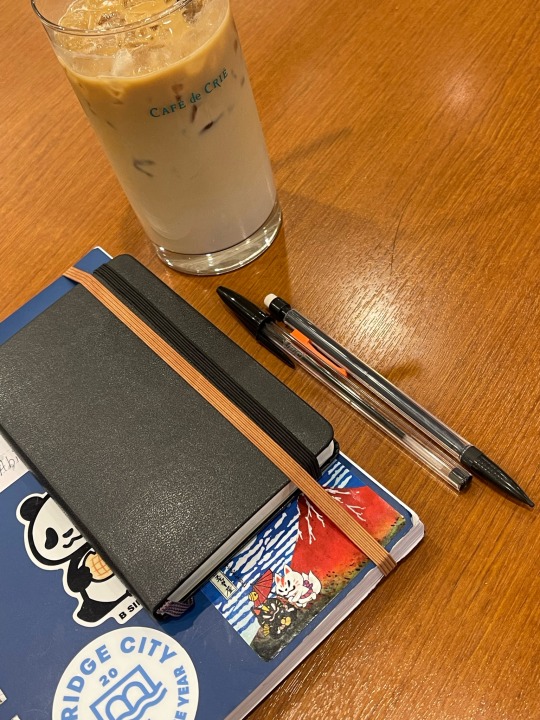

#studyblr#study blog#langblr#langblog#japanese langblr#japanese language#japanese#studyinspo#study motivation#study aesthetic#japanese kanji#japanese manga#learning japanese#student life#language learning#language blog#language
243 notes
·
View notes
Text
Oh man I’m replaying Ghost Trick in Japanese and I just realised the wordplay in the title (and in the mechanics)
トリック is trick, obviously, but the word for a ghost possessing something is 取り憑く(トリツク)which is identical to “trick” except for the size of the ツ, when written in katakana!
When the game switches from a big dialogue break to gameplay, it shows a kind of title card to tell the player they’re gonna be able to move again:
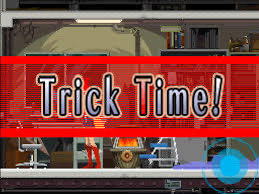
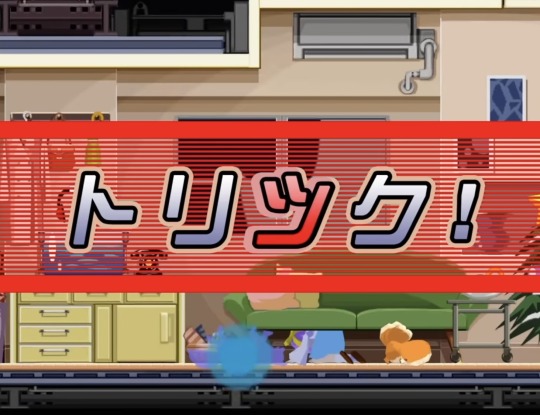
Isn’t that cool?! The red ツ showing the double meaning in the Japanese like, 取り憑いてトリック!
405 notes
·
View notes
Text
改まった形|Polite Forms
In formal settings like in a business meeting or at a public gathering some words are switched with politer forms. You often hear them when somebody is giving a speech, holding a presentation or on TV. But they appear in written form as well, especially in business context. Basically, everywhere where keigo is used, it is also expected to apply politer forms.

#文法#敬語#japanese langblr#langblr#studyblr#study movitation#learning japanese#japanese vocabulary#japan#japanese#study blog#study notes#language blog#keigo#japanese studyblr#japanese grammar#japanese language#日本語#日本語の勉強#nihongo
154 notes
·
View notes